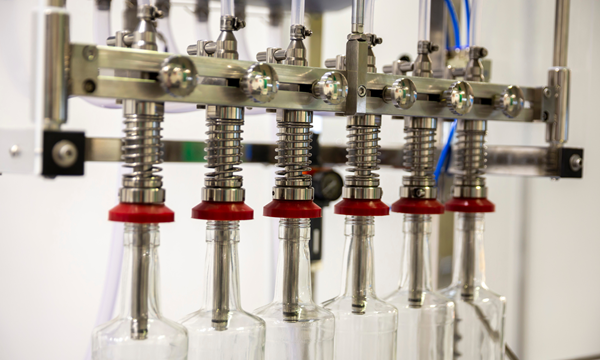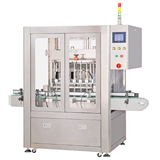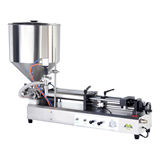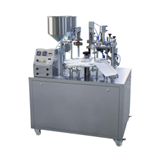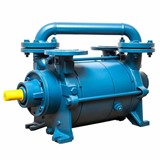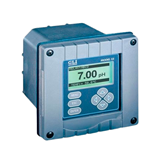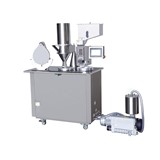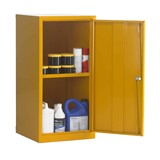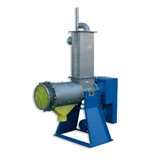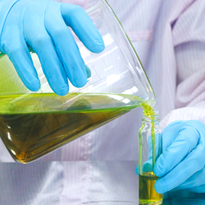As business owners, it's crucial to understand that your success is dependent on the effectiveness of your systems. If you have escalating product rejects and customer complaints due to inconsistent fills caused by liquid filling machine problems, your business is a ticking time bomb.
In a time where user-generated content (UGC) and word-of-mouth are powerful, don’t let your product and production issues be the hurdle in scaling your business. Sometimes, what seems trivial on the production floor can wreak havoc even on the strongest brands.
Business Roadblocks Hidden in Liquid Filling Machine Problems
The startup phase of any business is undeniably the hardest part of the journey. It’s often the make-or-break stage where investments are strategically observed to see if they are worth it.
To help you understand the impact of liquid-filling machine failures, here are five key areas affected:
#1 Losing Customer Experience and Trust

Issues with liquid filling machines can severely damage consumer trust, which is invaluable to your business. Imagine the time and marketing involved in turning an audience into a customer. Additionally, the potential of one happy customer includes the following positive opportunities from customer lifetime value (CLV):
- Customer referrals: One satisfied customer can bring in ten more customers when they share a positive experience with your product.
- User-generated content (free marketing): Satisfied customers will often create content to review and share their positive experiences with your brand. This is arguably the best marketing that can go viral more than your in-house marketing efforts.
- Brand loyalty and patronage: It’s more cost-efficient to keep old customers than to acquire new ones. Therefore, if you keep losing current customers, you’ll be burning money to convert new customers.
As the chairperson of Toyota Motors Inc., Akio Toyoda, once said: “When consumers purchase a Toyota, they are not simply purchasing a car, truck, or van. They are placing their trust in our company.” Now, Toyota is world-famous for the quality of its vehicles and their customer service.
#2 Damaged Brand Reputation

Your business's reputation will suffer when numerous complaints arise from inconsistent fills by outdated liquid filling machines. In a time where cancel culture is rampant, one complaint from a customer with a big following can put you out of business faster than a wildfire consumes a forest.
It’s more costly to recover from a tarnished brand reputation than to streamline a production line or invest in equipment to address product inconsistency issues.
#3 Product Waste & Overhead Costs

Unresolved liquid filling machine problems in terms of calibration and viscosity (or liquid consistency) can lead to underfill or overfill. They can cause product waste and downtime, which can severely affect your business.
#4 Profit Loss

Product inconsistencies can lead to several factors causing profit loss, with customer experience being one of the most significant. The next significant ones are product and downtime losses.
Optimising the production line and implementing efficient systems can prevent such losses. Good examples of contingencies for this are:
- Packaging redesign
- Workflow modification
- Scheduled cleaning and inconsistent fill troubleshooting process and maintenance caused by:
- Air in the pipes
- Viscosity (thick liquid) issues
- Wear and tear of parts
- Clogged pistons and tubes
#5 Demand vs. Production

Many businesses fail to scale successfully due to increased demand without a robust system in place. This can trigger a domino effect of negative consequences, such as:
- Disrupted supply chain
- Loss of competitive edge
- Inefficient production workflows
- Employee burnout and management issues
- Poor customer experience
With everything mentioned above, the next hard decision you should consider is when and how to invest in an equipment replacement or upgrade manual production to an automated liquid filling system.
When to Consider Replacing or Upgrading Your Production Line
Investing in new equipment is a significant overhead expense. Two types of businesses often face this decision: manual-filling businesses and companies with outdated liquid-filling machines. Here are the differences in approach:
- Manual-filling businesses: Small companies with bigger demand and costly overhead in labour costs may benefit more from purchasing modern liquid-filling machines. However, the investment must come with certain considerations, which will be discussed in the next section.
- Companies with outdated equipment: Business owners will often consider new equipment when repairs and breakdowns become more frequent and costly. However, not all equipment issues can be solved by purchasing a new one. Some can be fixed by troubleshooting inconsistent fills with frequent:
- Audit and monitoring
- Calibrations
- Equipment cleanup and maintenance
- Minimal repairs
If the repair costs are becoming expensive and disruptive to the production line and the components are showing irreparable wear and tear, it’s good to start looking for possible resolutions before the whole production line fails.
Principles to Consider in Replacing Liquid-Filling Machines

Replacing production equipment requires thorough financial analysis and the elimination of emotional biases. Here are the things you should consider:
-
The ratio of the replacement vs. the gross revenue of your business: According to personal finance expert and New York Times best-selling author Dave Ramsey, if the equipment replacement only costs a fraction of your annual revenue, it’s better to purchase one. However, if the cost of buying new equipment consumes a large part of your gross revenue, it might sink you.
It’s better to buy a replacement but consider a used version that’s still reliable and gets the job done. -
Compute all the downtime, repair, and equipment failure costs: Match the cost of new equipment against the total cost of the issues caused by faulty equipment and the repairs involved. If the answer favours the replacement, then compare the price of a new one versus a used piece of equipment that functions at the same rate and capacity.
-
Remove the emotional bias from the decision-making: It pays to be objective when it comes to business decisions. Sometimes, when a part of the production becomes a headache, it’s easy to throw all the analysis out and urgently buy new equipment without much thought or analysis.
However, once the emotion subsides and the money is gone, you’ll be frustrated to earn back the invested money, which is tied to uncertainty. By evaluating your cash flow, gross revenue, and equipment cost analysis, you’ll have a more informed decision based on your business capacity rather than emotions that change every now and then.
Save Time in Procuring Equipment with IndustrySearch
The hardest part of finding new and used equipment is choosing a reliable supplier. To help you find the right equipment, here are some factors to consider:
- Production capacity
- Features and compatibility with the current production line
- Cost
- Quality and industry compliance
- After-sales maintenance and support
- Future-proofing and scalability
- Size and infrastructure.
- Supplier reputation and feedback from previous customers
Replacing or buying liquid-filling machines can be labour-intensive and involve difficult decisions. However, when done properly and with the right supplier, all the efforts will contribute to a more streamlined production line, giving a head start in scaling your business.
At IndustrySearch, we partner with the best liquid-filling machine suppliers in the industry to speed up your procurement process. Get 3 quotes and connect with the right suppliers today.

